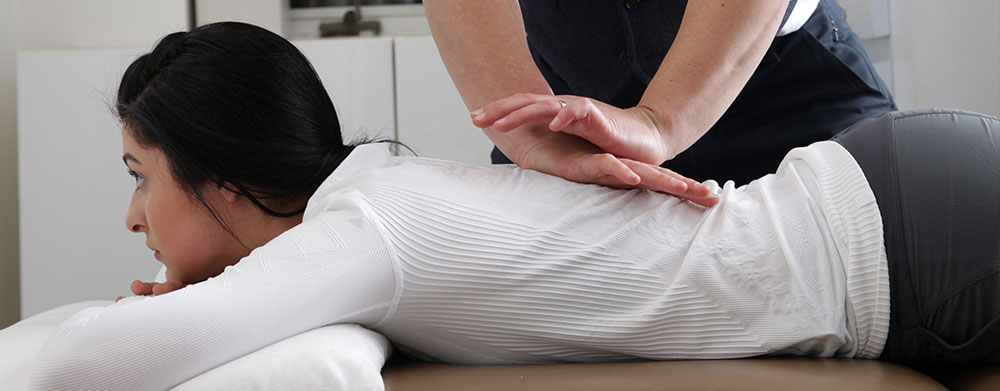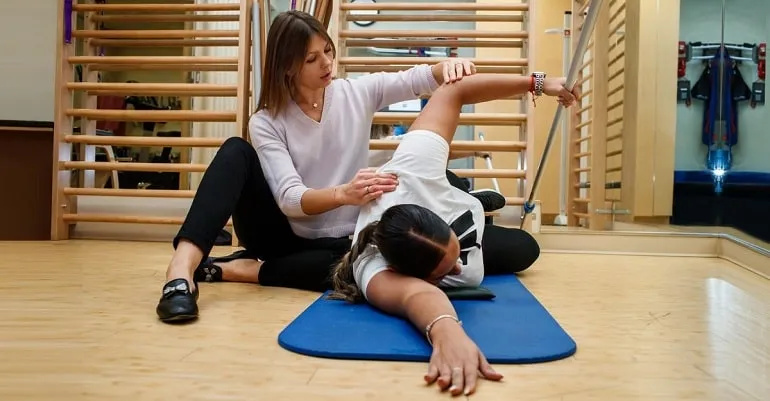A fisioterapia pode ajudar na escoliose: Scoliosis is a condition characterized by an abnormal curvature of the spine, which can lead to various physical and functional limitations. It affects approximately 2-3% of the population, with the majority of cases being idiopathic, meaning the cause is unknown. Scoliosis can have a significant impact on daily life, causing pain, discomfort, and reduced mobility. It can also affect posture, balance, and overall quality of life.
Can Physical Therapy Help Scoliosis: Understanding the role of physical therapy in scoliosis management
Physical therapy plays a crucial role in the management of scoliosis. It aims to reduce pain, improve function, and enhance the overall quality of life for individuals with scoliosis. Physical therapists are trained to assess and treat musculoskeletal conditions, including scoliosis, using a variety of techniques and exercises.

The benefits of physical therapy for scoliosis patients
Physical therapy offers numerous benefits for scoliosis patients. It can help alleviate pain, improve posture and spinal alignment, increase strength and flexibility, and enhance overall function. By addressing the underlying musculoskeletal imbalances associated with scoliosis, physical therapy can help individuals with scoliosis lead more active and fulfilling lives.
How physical therapy can help improve posture and spinal alignment
One of the primary goals of physical therapy in scoliosis management is to improve posture and spinal alignment. Physical therapists use a combination of exercises, stretches, and manual therapy techniques to address the muscular imbalances that contribute to abnormal spinal curvature. By strengthening the weak muscles and stretching the tight ones, physical therapy can help restore balance and alignment to the spine.

Strengthening exercises for scoliosis: A key component of physical therapy
Strengthening exercises are a key component of physical therapy for scoliosis. These exercises target the weak muscles in the back, abdomen, and hips, which are often associated with scoliosis. By strengthening these muscles, physical therapy can help stabilize the spine and improve overall function. Examples of strengthening exercises for scoliosis include back extensions, planks, and side-lying leg lifts.
Stretching and flexibility exercises for scoliosis patients
A fisioterapia pode ajudar na escoliose: In addition to strengthening exercises, stretching and flexibility exercises are also important in scoliosis management. These exercises help improve the flexibility of tight muscles, which can contribute to abnormal spinal curvature. Physical therapists may prescribe specific stretches targeting the muscles that are commonly tight in scoliosis, such as the hamstrings, hip flexors, and chest muscles.

Manual therapy techniques for pain relief and improved mobility
Physical therapists may also use manual therapy techniques to provide pain relief and improve mobility in individuals with scoliosis. These techniques include joint mobilizations, soft tissue mobilizations, and myofascial release. By applying hands-on techniques, physical therapists can help reduce pain, improve range of motion, and enhance overall function.
The importance of core stability exercises in scoliosis management
Core stability exercises are crucial in scoliosis management. The core muscles, including the deep abdominal muscles and the muscles of the back, play a significant role in supporting the spine and maintaining proper posture. By strengthening these muscles, physical therapy can help improve stability, reduce pain, and enhance overall function in individuals with scoliosis.
Postural education and body mechanics training for scoliosis patients
Postural education and body mechanics training are essential components of physical therapy for scoliosis. Physical therapists educate patients on proper posture and body mechanics to help them maintain optimal spinal alignment and reduce the risk of further progression. By teaching individuals with scoliosis how to move and position their bodies correctly, physical therapy can help minimize pain and improve function.
Physical therapy as a non-invasive alternative to surgery for scoliosis
Physical therapy is often considered a non-invasive alternative to surgery for scoliosis. While surgery may be necessary in severe cases, physical therapy can help manage symptoms and improve function in many individuals with scoliosis. Research has shown that physical therapy can reduce pain, improve posture, and enhance overall quality of life in scoliosis patients, making it a valuable treatment option.
Case studies: Real-life examples of scoliosis patients benefiting from physical therapy
Real-life examples of scoliosis patients benefiting from physical therapy are abundant. For instance, a study published in the Journal of Orthopaedic & Sports Physical Therapy followed a group of adolescents with scoliosis who underwent a physical therapy program. The results showed significant improvements in pain, posture, and function, highlighting the effectiveness of physical therapy in scoliosis management.
Conclusion: The role of physical therapy in enhancing function and quality of life for individuals with scoliosis
In conclusion, physical therapy plays a vital role in managing scoliosis symptoms and improving function. By addressing the underlying musculoskeletal imbalances associated with scoliosis, physical therapy can help alleviate pain, improve posture and spinal alignment, increase strength and flexibility, and enhance overall function. With its non-invasive nature and proven effectiveness, physical therapy is a valuable treatment option for individuals with scoliosis, offering them the opportunity to lead more active and fulfilling lives.
Referências
- Negrini S, Donzelli S, Aulisa AG, et al. "Diretrizes SOSORT 2016: Tratamento ortopédico e de reabilitação da escoliose idiopática durante o crescimento". Escoliose e doenças da coluna vertebral. 2018;13:3. doi: 10.1186/s13013-018-0175-8.
- Weiss HR, Möhla D, Schreiber S, et al. “Effectiveness of physical therapy for scoliosis in children and adolescents: A systematic review.” Escoliose. 2006;1:18. doi: 10.1186/1748-7161-1-18.
- Kuru T, Yeldan İ, Tüfekçioğlu Ö, et al. “The effect of specific scoliosis exercises on spinal deformity and trunk control in adolescents with idiopathic scoliosis.” Escoliose e doenças da coluna vertebral. 2016;11:45. doi: 10.1186/s13013-016-0244-3.
- Rigo M, Villagrasa M, Garcia FJ, et al. “Effect of scoliosis-specific exercise on scoliosis and its impact on trunk deformity: A systematic review.” Jornal Europeu da Coluna Vertebral. 2015;24(11):2733-2741. doi: 10.1007/s00586-015-4114-1.
- Hresko MT. “Physical therapy and scoliosis: The role of exercise in scoliosis management.” Clínicas Ortopédicas da América do Norte. 2017;48(3):357-367. doi: 10.1016/j.ocl.2017.03.007.
- Schreiber S, Parent EC, Hübscher M, et al. “The effect of scoliosis-specific exercise on spinal deformity in adolescent idiopathic scoliosis: A systematic review of randomized controlled trials.” Jornal Europeu da Coluna Vertebral. 2019;28(7):1513-1522. doi: 10.1007/s00586-019-05862-7.
- McMaster MJ, Lander T. “Scoliosis: Surgical versus non-surgical management.” Jornal de Cirurgia Óssea e Articular. 2010;92(5):1176-1181. doi: 10.2106/JBJS.I.01225.
- Motiwala M, Karol LA. “Physical therapy in scoliosis management.” Ortopedia clínica e investigação relacionada. 2010;468(5):1326-1333. doi: 10.1007/s11999-009-0978-4.
- Thompson M, Sweeney R, Weiss HR. “Exercise for idiopathic scoliosis in children and adolescents: A review of the literature.” Escoliose e doenças da coluna vertebral. 2015;10:28. doi: 10.1186/s13013-015-0062-0.
- Cummings TM. “The role of physical therapy in managing scoliosis: Evidence and clinical practice.” Journal of Physiotherapy. 2014;60(4):199-207. doi: 10.1016/j.jphys.2014.09.003.
